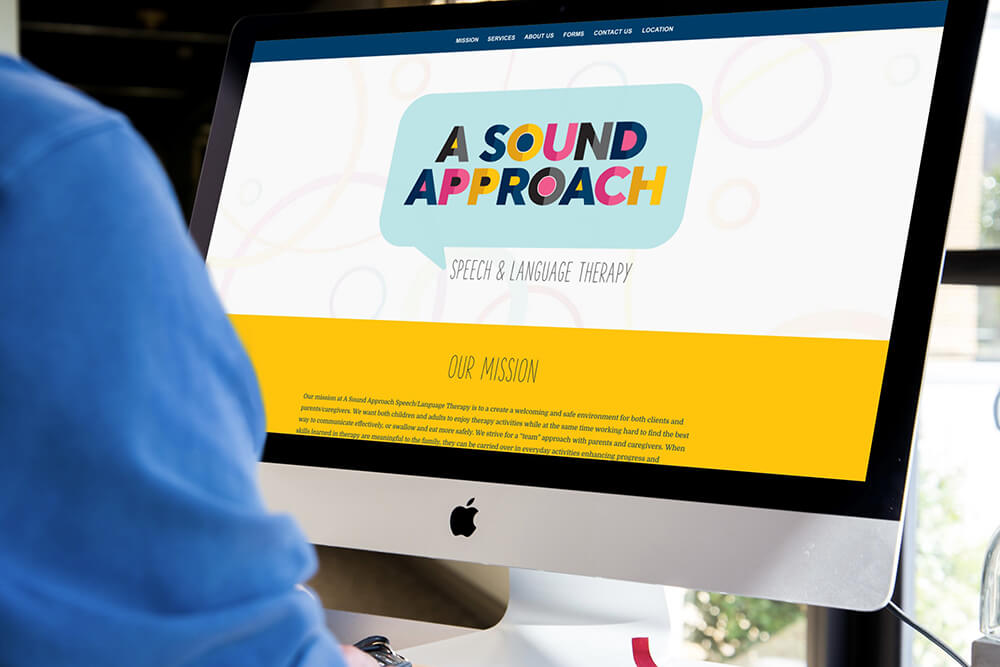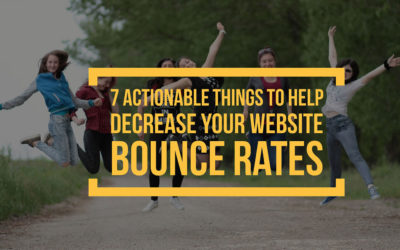The last decade was a never-ending parade of open tabs and aggressive push notifications that kept competing for our attention. This has called for a lot of introspection from web designers who understand customer sentiments. After all, the whole point of setting up a website is to attract visitors — not to drive them away.
This is why it may come as no surprise that the coming decade’s web design trends will be more concerned with intuitiveness and the clarity of use, instead of pop-ups and the likes.
Think of it this way: in an environment that is utterly awash with both information and stimuli, a website needs to deliver its message all the more clearly so that it will be able to stand out from the rest of the crowd.
Here are a few web design trends for 2020 that will ensure that the coming years will be all about clear and uncluttered websites, even as they are rich with content and visuals. Following these trends means that you can now create a striking website that is both up-to-date while being perfectly in style:
The End of the Ultra-Minimalism Era
Ultra-minimalism has been dominating product design for a very long time. Web designers were competing with each other in order to reduce all the visual properties of the design and leave only the most essential objects behind, such as important functional elements and key content. As a direct result, they went on to create products that used highly exaggerated amounts of white space and almost no color to the point where all interfaces started to look similar.
Site visitors and users started to get bored with the same design patterns — and web designers realized that. This is why they took to experimenting with different visual styles. Here, one particular style has made a name for itself and came into the spotlight. This design is known as Gradients 2.0.
In the last couple of years, such gradients started to replace the usual flat colors by adding a measure of depth in otherwise flat layouts so that they would become more visually interesting. Product marketing teams, customers, and other stakeholders love gradients because of their aesthetic appeal and also because they can use their branding colors to create them.
Gradient colors are a very versatile tool since they can be used in multiple contexts such as color filters over product images or content, as the site background, or even as illustrations. Finally, they can be used to accent functional elements such as social media and call to action (CTA) buttons. Best of all, they look equally well irrespective of screen size so you can use them both on your large TV or desktop screen as well as the smaller displays of mobile devices.
Adaptive Designs
Adaptability is bound to be a key trend for the coming year. The pages of a site should be readable and visually appealing, regardless of the display medium. In other words, the site itself should adapt to the screen size instead of the other way around. Many desktop based sites don’t take into account the intricacies of mobile internet users. The era of the desktop is rapidly being overshadowed by mobile phones and this trend is all set to increase in the future.
As of now, more mobile devices are used to surf the net than ever before, and people don’t want to squint to see images and read the content. If the desktop site is not customized for mobile usage, it will rapidly lose its appeal amongst its target audience.
The biggest problem with sites optimized for large screen desktops is that that sizing issues are not related to text and media content alone. Critically important elements may also disappear from the small screen when a site is compressed without changing its size automatically. This means that the potential customer won’t be able to contact you or add a product to the cart, thus defeating the core purpose of the site.
This is the part where adaptive websites come into the picture.
The key component of most adaptive site landing pages include the menu button that will allow you to navigate the site and access the following features:
- The visitor’s personal account (If applicable)
- Shopping cart (in case it is an e-commerce store)
- Important pricing information
- Site settings (so that it can be optimized by the users as per their preferences)
- The help section
- Any other important sections of the site
The adaptive site will allow visitors to seamlessly access any or all of the above sections regardless of the device they may use to access it. Many people simply don’t bother to continue to work with a non-adaptive site since it is both irritating and inconvenient. One of the most important tasks for website developers in the coming decade is to try and save visitors from precisely these problems.
The coming decade’s web design trends will be more concerned with intuitiveness and the clarity of use.
The Era of Motion Design Is Here
The rapid pace of this century has made most of us very impatient and the same also applies to the consumption of information on the internet. The average visitor wants all of the information they require on the same page, without the need to browse around. This phenomenon is called instant exposure and web designers are scrambling to come up with innovative designs to give the users what they want.
Implementing motion design is one way of doing so. Faster internet speeds and greater bandwidth has made life easier for both designers and site users. This is one of the key reasons why it is now possible to add innovative elements like GIFs to familiarize a visitor with the important characteristics of a car.
This way of presenting important information is considered to be much more efficient than ordinary textual or even pictorial content. A GIF can be loaded faster than most other video formats so that it does not slow down the site. GIFs can easily work well with both desktop browsers as well as ordinary smartphones so there are no adaptability issues. Their short duration also allows users to consume to content on the go.
Video Marketing
A survey conducted in 2019 (State Of Video Marketing Survey 2019) led to some surprising conclusions. The study found out that while most users did not want to stay long on the site, they were quite willing to spend 2 or 5 minutes to view a video they liked. Let us check out some of the more important statistics that this study revealed:
- 96 percent of users like to watch videos so that they would be able to explore a product in more detail before buying it
- 79 percent of users stated that it was the video presentation that convinced them to purchase the product
- 68 percent prefer to study fresh projects by watching videos, instead of reading text
- 94 percent of public relations (PR) managers confirmed that video helps users understand a product better
- 84 percent of managers think that video presentations have aided in increasing traffic on the site
Chatbots
This is also another emerging trend that is related to artificial intelligence (AI). Many users often turn to customer services and technical support with different questions regarding the company’s products and/or services. As a general rule, many questions are of the same nature and require the same repetitive answers.
Chatbots can now take over to do the job so that the company’s human resources are tasked with more important jobs. A chatbot is not the same as live chat. Instead, it is a program that is designed to imitate an actual conversation. Such AI-based software is becoming more and more advanced. In fact, cutting edge developments in machine learning have gone to ensure that the interactions are rapidly becoming more human-like.
These bots come online the moment a user comes to a site. They have an expanding base of questions and answers that they use to immediately respond to anyone who interacts with them. This cuts down on the preliminaries so that interested users can be shifted to call center operators who will be able to answer their questions in the shortest time frame possible.
While it takes time and effort to get the chatbots set up on the front end, it can save in labor costs and wasted employee time in the long run.
Abstract Illustrations Are In
Abstract illustrations as a form of expression have been around since time immemorial. However, they really took off thanks to Google’s doodles (used to highlight important individuals and events on a daily basis). They can help a product to stand out from the crowd and become a part of the brand’s very DNA. It is possible for competing companies to copy the colors and even the style of a successful brand, but they can’t legally copy an abstract illustration.
As of now, there are many illustration styles around, and it is becoming increasingly harder for users to match a specific style to a particular organization. This problem has been solved by creating progressively more abstract illustrations styles. Such illustrations are bound to dominate web design in the coming decade as well.
A website needs to deliver its message clearly so that it will be able to stand out from the rest of the crowd.
Oversized Elements and Type
Today’s websites are now favoring large and prominent elements in order to communicate instantaneously and clearly. This shift in design applies to all the elements present on a webpage ranging from big, bold typography, all the way to full-screen videos and images, and even an oversized set of menu icons.
It makes sense from the marketing viewpoint because such elements are very eye-catching. Furthermore, they can also help site visitors better understand the nature and scope of the site within a few seconds at most. An added bonus is that they will look great regardless of the size of the screen.
Today, a large number of sites are jumping on the large element bandwagon and also pairing this trend with equally large typography. This layout will deliver a message very effectively thus making sure that the more important aspects of the site are not only seen but they actually register and resonate with the target audience.
Split-Screen Content
It is difficult to convey multiple ideas while retaining a relatively uncluttered look. Enter the split-screen website. Once the screen has been evenly split down the middle, each side will be allowed an equal spot in the limelight.
This highly captivating web design trend breaks the usual run of the mill rectangular mold in two. More creative designers have added some extra pizazz by making the individual screens behave slightly differently from each other. For example, it is possible to increase or decrease the scroll speeds of the two so that they move at different paces.
Fluid and Fluorescent Artwork
3D artwork can offer entirely surrealistic and otherworldly interpretations of familiar shapes. Web designers today are experimenting in different types of luminous, neon-colored shades. This trend is in complete contrast to the minimalist trend since it has been designed in such a way that it will lure the visitors’ attention.
The use of digital 3D artwork is not a radically new trend in itself but the speed at which they are being accepted is and gaining popularity is increasing. This is largely due to the fact that 3D modeling programs are more user-friendly and you don’t require advanced degrees to learn to operate them. When such designs are combined with fluorescent colors, you get a highly futuristic result that can easily infuse a site with its very own vibrant personality.
However, a word of caution: this web design trend should not be used in a stand-alone capacity, otherwise, the site will look like something out of a psychedelic dream. Moderation is the key here and you should aim to scatter multiple fluorescent colors all around the webpage. They should be complementary, or even secondary to the hues and elements in your color palette.
That said, it is important to remember that the entire point of using these fluorescent colors is to attract attention, not create a discordant visual note. This is why you should balance them out with neutral shades of white and gray.
Conclusion
The above website design trends will usher in a whole new internet experience for users and designers alike. Hop onto the bandwagon so that you won’t be left behind!
- A Step-By-Step Guide to Designing a Mobile-Friendly Website - November 11, 2024
- How Content Marketing Enhances Your Website’s SEO Performance - November 11, 2024
- How to Pick the Perfect Color Scheme for Your Website Design - November 11, 2024





